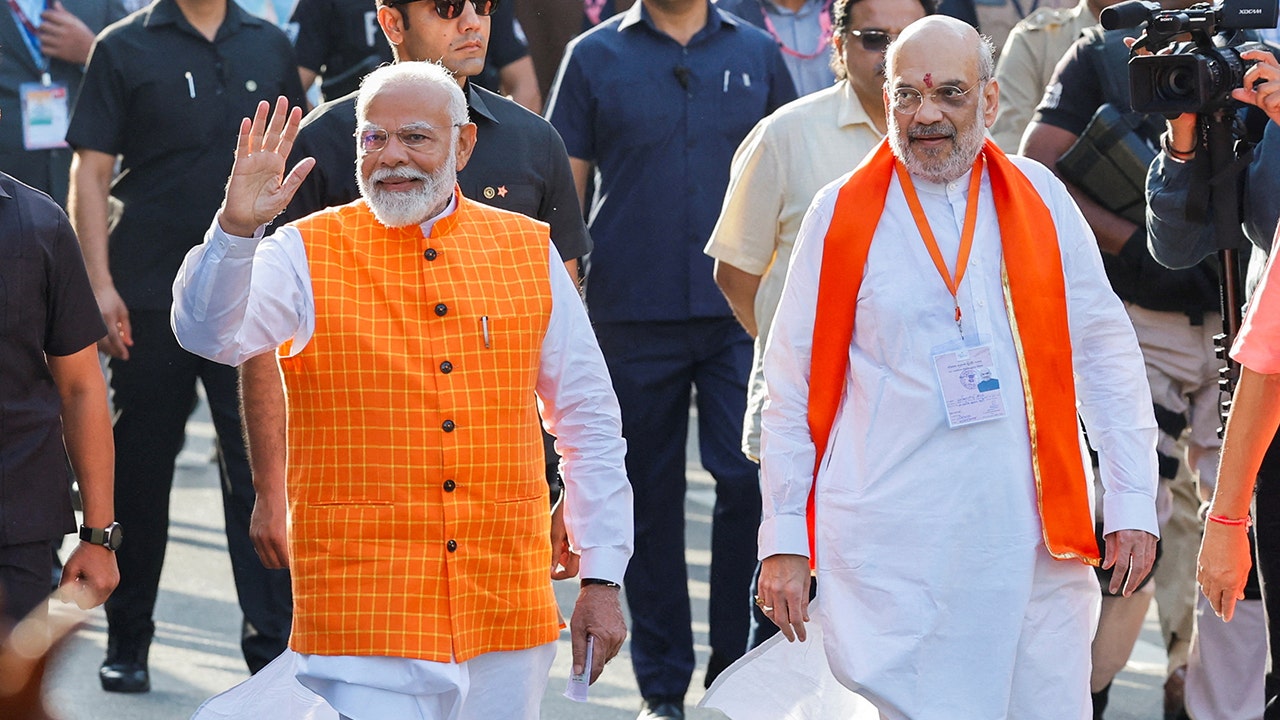It was the dead of night and a fire was raging in the apartment building where a Russian drone had struck just minutes earlier. Through the smoke, residents stumbled down the stairs from their apartments and told fire officers who were trying to account for all the inhabitants that a young woman was renting the top-floor flat.
Artem, 37, was one of several officers on duty that night, March 13, who raced up to try to find her. On the fifth floor, they broke open the metal door of the woman’s apartment, and dense black smoke billowed into the stairwell. On the other side of the door, they looked into a void.
“There was no apartment,” said Artem, who gave only his first name for security reasons. “There was a meter of floor and then nothing.”
That strike, which killed four people in the building, was one of many that have rained down for months on the northeastern Ukrainian city of Sumy, just 25 miles from the border with Russia, and its surrounding region. Ukrainian officials have warned with increasing urgency that Sumy is a target of a new offensive by Russian forces massing across the border.
“The mood is very anxious,” said Capt. Dmytro Lantushenko, 38, spokesman for the 117th Brigade of the Territorial Defense Forces, based in Sumy. “People read the news, people read Telegram channels, and they cannot ignore the news about a possible attack on Sumy.” Telegram is one of the most widely used social media channels in Ukraine.
Villages and towns closer to the border are already being shelled daily, and guided bombs, rockets, missiles and drones have smashed into factories and power plants in Sumy’s industrial district, Captain Lantushenko said. The damage is accumulating, and Sumy, like much of Ukraine, is living under rolling power outages.
The five-story apartment block destroyed on March 13 was struck by an Iranian-made Shahed drone, said Artem, the fire officer. The Russians have taken to attacking the center of town with bursts of several exploding drones, which have hit several residential buildings.
The fire crews worked for four days putting out the fire and clearing the rubble, Artem said. A soldier living alone in one apartment and a pensioner in another were among those who were killed in the strike, Artem and a family member of the soldier said. A family of four were pinned under a fallen ceiling. Fire officers pulled out the wife and two children but said the husband did not survive. Rescuers never found the young woman in the top apartment.
On a recent morning, a resident named Lyubov, 71, was having new windows put in at her apartment after they were blown out by a drone strike just a week earlier. She missed being injured because she went to stand in the stairwell when she heard an air raid siren, she said. Like Artem, she provided only her first name for security reasons.
With its tree-lined avenues and lush, riverside parks, Sumy has the feel of a quiet, provincial town. Shoppers wait at bus stops and young women push infants in strollers in the parks.
Yet the city has lived through heavy assault before and its inhabitants put up a ferocious resistance. When Russia began its full-scale invasion in 2022, tanks rolled into Sumy the very first day, Feb. 24.
The Ukrainian Army and security services had been ordered to withdraw, leaving behind just a small number of people in the territorial defense force, along with members of the emergency services and medical personnel in the hospitals.
Artem was among the first to come across the Russians when he was driving back to his base at around 5 that afternoon. He saw four tanks approaching along the main avenue. “I stopped at a traffic light,” he said, “and they stopped at the light too.” He laughed at the memory of the surreal moment.
The Russian soldiers seemed relaxed, he said. One had his rifle slung across his back and his legs crossed over the barrel of the tank, he recalled. The Russians began setting up checkpoints on the edge of town, he said. But that evening, members of the Ukrainian territorial defense forces attacked the Russian forces and burned some of their vehicles.
Townspeople rallied to the defense of the city, said Captain Lantushenko, who volunteered for the territorial defense forces shortly before the invasion.
“There was an incredible unity,” he said. “We realized we had to defend our homes on our own. And thousands of people like me went and took weapons.”
Facing such heavy resistance, the Russian troops abandoned their plans to occupy the city as they had elsewhere. In those other areas, the occupations led to brutal consequences for residents.
“We had guys on bicycles with rifles on their backs,” Artem recalled. Two of his friends who ran a cafe had scores of people making Molotov cocktails in their courtyard, he said. “From the first days it was like: ‘Just you dare try and come here.’”
The Ukrainians hit and burned Russian vehicles at two entry points to the city on the first days. The Russian troops pulled back, choosing instead to blockade the city, setting up positions on the perimeter and firing artillery from afar.
“They shelled and shelled,” Lyubov recalled. She gave only her first name for security reasons to avoid repercussions for herself or her family. She moved in with her daughter and grandchildren for two months during that time so the family could be together. “There were often air raid alarms,” she said. “We all sat in the corridor.”
Within a month, the Russian Army abandoned its northern incursion, retreating from a whole stretch of territory around the capital, Kyiv, and the northeastern cities of Chernihiv and Sumy, to focus on seizing the eastern region of the Donbas.
Later in 2022, Ukraine won further successes, forcing Russian troops into retreat from another part of northeastern Ukraine, around the city of Kharkiv, as well as from the Kherson region in southern Ukraine.
But since then, the momentum has swung in favor of the invading Russian forces. Ukraine failed to advance far in a counteroffensive in the summer of 2023 and has suffered a shortage of troops and ammunition as American support became delayed by hard-liners in Congress.
In early May, Russia began a new incursion toward Kharkiv, Ukraine’s second-largest city, after Kyiv. Troops seized a dozen villages and approached within artillery range of the city. More forces are mustering near the border to attack Sumy, Ukrainian officials have said.
There is a weariness and a sense of dread among residents as they face the ordeal of another Russian attack.
People who had cars and the means were leaving, Artem said. But those who had jobs or family commitments were staying, hoping for the best.
“I don’t believe they will come to Sumy,” Lyubov, whose windows were shattered by the drone strike, said of the Russian forces. “But I’m afraid.”
Captain Lantushenko expressed confidence that the army’s preparations and fortifications would be sufficient to hold out against a renewed Russian assault. Unlike the first days of the war, Ukraine’s defense forces are now trained and organized, he said.
But people were exhausted, he said, even if the sense of unity was still there.
“No one knows when the war will end,” he said. “I don’t know a single person who doesn’t have a friend or family member or neighbor in the army, and more and more people are in the army every day. It’s incredibly hard to keep holding on.”






